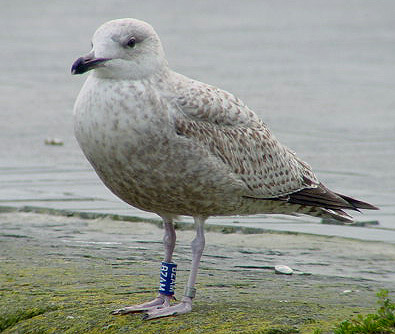 Herring Gull- Zilvermeeuw (argentatus & argenteus)
Herring Gull- Zilvermeeuw (argentatus & argenteus)
(last update:
Herring Gull plumages:
hg 1cy July
hg 1cy August
hg 1cy September
hg 1cy October
hg 1cy November
hg 1cy December
hg 2cy January
hg 2cy February
hg 2cy March
hg 2cy April
hg 2cy May
hg 2cy June
hg 2cy July
hg 2cy August
hg 2cy September
hg 2cy October
hg 2cy November
hg 2cy December
hg 3cy January
hg 3cy February
hg 3cy March
hg 3cy April
hg 3cy May
hg 3cy June
hg 3cy July
hg 3cy August
hg 3cy September
hg 3cy October
hg 3cy November
hg 3cy December
hg sub-ad January
hg sub-ad February
hg sub-ad March
hg sub-ad April
hg sub-ad May
hg sub-ad June
hg sub-ad July
hg sub-ad August
hg sub-ad September
hg sub-ad October
hg sub-ad November
hg sub-ad December
hg ad January
hg ad February
hg ad March
hg ad April
hg ad May
hg ad June
hg ad July
hg ad August
hg ad September
hg ad October
hg ad November
hg ad December
|
Herring Gull BZAM2cy (argenteus), February 15 2001, Oostende, Belgium (51.13N-02.55E). Typical argenteus, ringed in summer 2000 at Zeebrugge, Belgium blue BZAM. Argenteus is a roof-top breeder in Oostende. A 2cy argenteus in so-called "first winter" plumage. Argenteus has a partial moult of head and body-feathers in spring. This partial moult starts in January and ends by May, leaving birds in so-called "first summer" plumage. The head and under-parts resemble the pattern in 1cy birds, although the head and breast turn much paler by June. The lowest scapulars may still be moulted in this period, showing a buffish tone and a neat pale fringe. The adjacent juvenile rear lowest scapulars are very worn by February.
The juvenile wing-coverts, rectrices and remiges are bleached and show wear in the fringes. The secondaries, primaries and primary coverts are dark with a small white tip, but the juvenile inner primaries show an obvious pale window, prominent from below and above. The under-wing is rather uniform grey-brown patterned. The tail has a broad sub-terminal band and isolated dark bars on the basal half. The iris is dark, the bill is blackish, sometimes with a paler base, and the legs are flesh-pink.
|
